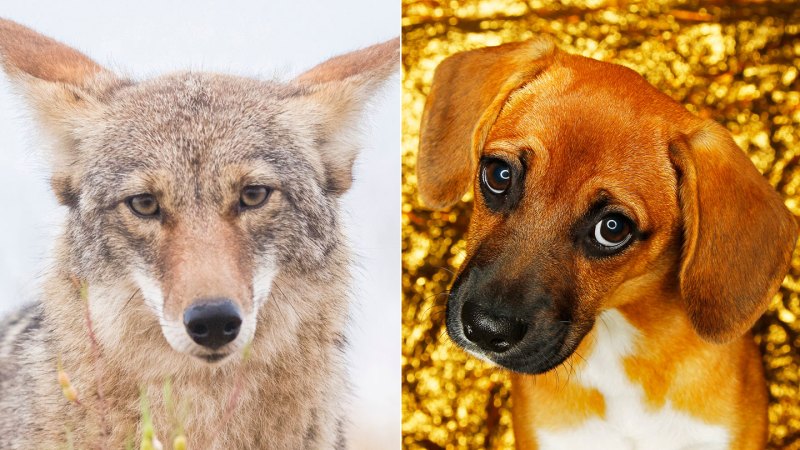Coyotes turn out to have face muscles that look capable of making that big-eyed, sad-puppy face that dogs have used to melt human hearts for eons.
That discovery supports a rethink of humans’ history with dogs, say biologist Patrick Cunningham of Baylor University in Waco, Texas, and colleagues. Maybe it’s not all about us.
He examined a little facial muscle called the LAOM at the upper, outer side of each eye in 10 coyote cadavers from Texas. The LAOM of the coyotes looks substantial enough to pull the top eyelids upward, Cunningham and colleagues report October 2 in Royal Society Open Science. That’s the move that creates the visceral tug of extra-large puppy eyes.
Another research team reported in April 2024 in Biology that three coyote cadavers each had somewhat delicate-looking but recognizable puppy-eye muscles, suggesting the discovery is not just a quirk of Texas coyotes. The expressive face muscles were found in two coyotes from Pennsylvania and one from Oregon, Courtney Sexton of the Virginia-Maryland College of Veterinary Medicine in Blacksburg, Va., and colleagues say.
“Making them look cute” is how Sarah Kienle, a comparative biologist who heads the Baylor lab where Cunningham does his research, describes the effect. People do wistful-puppy looks in about the same way. “You’re not changing the shape of your eyeball — you’re just making them appear bigger,” Kienle says.
Since at least 2019, researchers have discussed how the evolution of face muscles that create a look so potent for managing humans was something that arose during canine domestication. The undomesticated gray wolves (Canis lupus) don’t have such musculature, even though they’re close relatives of our special Canis familiaris pals.
But the narrative may not be so neat. Wild relatives called African wild dogs (Lycaon pictus) do have the cuteness muscles — and now the Baylor team has shown that the coyote (Canis latrans) turns out to have them too. How coyotes deploy those pleading looks in the wild is still unknown.
But this array of potentially puppy-eyed relatives for the domesticated Canis familiaris, “changes the conversation,” Kienle says. The communicative power of the sad-puppy eye muscles seems “potentially more an ancestral trait rather than something that’s evolved as part of this dog-human relationship.”


